Irish vehicles for export: Timoney armored car
In the early seventies of the last century, the leadership of Ireland preoccupied with updating the fleet of light armored vehicles. The army and the police had a number of French-made Panhard M3 armored cars, but they no longer met the requirements of the time. For this reason, the Ministry of Defense has appealed to several companies to create a new armored car that can perform a wide range of tasks in a variety of conditions. From the new machine it was required to work equally well both in urban conditions and in rough terrain. The task was not easy, but those who wanted to take it were found.
Armored car for Ireland
The chief designer of the new project was Professor S.G. Dublin University. Timoni. He already had extensive experience in the design of armored vehicles, since he had previously participated in the design of the Saladin armored vehicle and the Saracen armored personnel carrier. In this regard, Timoney could without any problems to develop the appearance of a promising armored car and arrange it in the form of a technical project. It is worth noting that the creation of the last professor was engaged in collaboration with his brother. Design work began in the first months of 1972 and continued throughout the year. In the spring of 73, the construction of the first prototype armored car began. The machine called Timoney Mk 1 was slightly different from the armored cars built later. It worked out some technologies, such as the original chassis. In this case, it was the Mk 1 that became the first armored vehicle built by Timoney Technology, founded by Professor Timoney specifically for the realization of a new project.
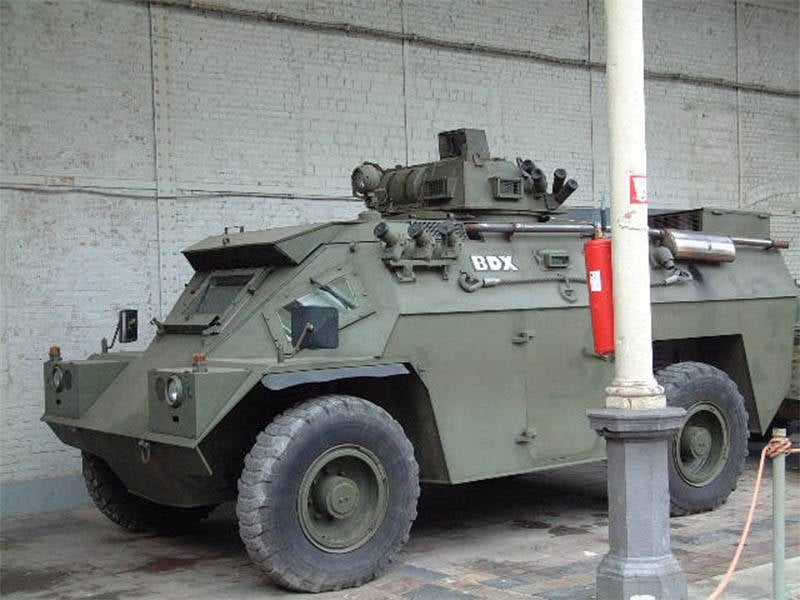
The main requirement of the customer regarding the ability to work in urban environments has determined the main features of the appearance of the new armored car. The authors of the project considered that the most convenient option would be a four-wheel drive four-wheel chassis and a relatively powerful all-armor booking. However, the most popular approach to the design of cheap armored vehicles, namely the use of the existing chassis, in the Irish conditions was unacceptable. Ireland did not produce any type of automotive vehicles suitable for use as the basis for a new armored vehicle. For this reason, the Timoni brothers developed their own undercarriage design.
The new chassis was supposed to install the original armored body, welded from straight metal sheets. To provide vserakurskoy protection against small weapons We chose 12,7 mm thick armor plates, from which we made the forehead, sides and stern of the armored car. Timoney's roof and bottom were a bit thinner - 9,5 mm. All the details of the body except the roof and the bottom could withstand the hit of an armor-piercing bullet rifle caliber, released from a distance of several tens of meters. Thus, the armored car was protected from most of the threats that the Irish police would have to face. As for the army, it also suited the level of protection.
For convenience of work in urban conditions, the workplace of the driver was equipped with three large bulletproof glass. One of them was placed on the front plate, the other two - on the side beveled body panels. All three glasses had the same level of protection as the hull armor, and, if necessary, could be closed with movable covers. Subsequently, some armored vehicles of the Timoney family were also equipped with eight embrasures with bulletproof glass on the sides and the rear door of the troop compartment, depending on the modification. For landing and leaving the armored car "Timoni" had three doors: each board had its own door, another one was placed in the stern armor sheet. In addition, in an emergency, the driver could throw off his windshield and get out through the resulting opening.
In front of the case was located the driver's workplace. He had a good overview of the front hemisphere and was protected from small arms. Immediately behind him, with an offset to the starboard side, the designers placed the Chrysler 360CID engine with a power of 200 hp. Interesting placement of auxiliary engine units. So, the radiator was directly above the power plant. Air cooling was supposed to be carried out with the help of air pumped through a special intake device. The air intake of the original form was placed directly on the roof, in front of it. Exhaust pipe and muffler carried to starboard.
Engine torque was transmitted to an Allison AT-540 automatic transmission with four forward and one reverse gears. All four wheels of the armored car were leading, but when driving on the highway it was possible to disable the front axle. The suspension of all four wheels was made on the basis of spiral springs and telescopic dampers. It is noteworthy that, in view of the state of the Irish industry, the Timoney brothers made both bridges and suspension elements interchangeable. For the convenience of the driver, the front steering wheels have been turned off if necessary by the hydraulic booster.
At the rear of the Timoney armored vehicle, there was a troop compartment for ten seats. Thus, together with the driver and commander, the car could transport up to 12 people. In the roof of the front part of the troop compartment, the armored car had a double hatch, which, if necessary, could be replaced with any suitable module with weapons.
The first version of the Timoney armored car turned out to be quite heavy, its combat weight was approximately 8200 kilograms. But even with this weight, the 200-strong engine accelerated the car on the highway to 85-88 kilometers per hour. If necessary, the armored car could swim at speeds up to 4,5-5 km / h. High speed was not available because the armored car did not have a propeller and moved through the water only by spinning the wheels. The 250-liter fuel tank made it possible to travel up to 640 kilometers along the highway. The characteristics of the chassis of the Timoni armored vehicle allowed her to move through trenches up to 1,4 meters wide and climb a wall up to 76 centimeters high.
In July, 1973, the first prototype of a promising armored car hit the test site. A year later, two more cars were built, made in accordance with the final project of Timoney. The first prototype with the designation Mk 1 was transferred to the army for trial operation in October 73-th and written off after a few months. This armored car went about 7000 miles and allowed to identify all the existing shortcomings. Later they were corrected and in 1974, the testing of two other prototypes began. The second (Mk 2) was operated until 1977 of the year and managed to drive over 12 thousand miles. It is worth noting that it was the second prototype that was the first of the Timoni armored vehicles to receive weapons - a turret with two 7,62-mm machine guns. The prototype Mk 3 went to the troops a few months after the Mk 2 and was used until the early eighties.
Initially, the military and security forces of Ireland have expressed a desire to purchase about two hundred new armored cars. However, when it came to signing the supply contract, the military department understood its financial capabilities and sharply reduced the desired number of vehicles. The police, in turn, completely abandoned the “Timoney”. As a result, a contract was signed for the supply of a total of ten armored vehicles. Professor Timoney was displeased with such a meager order. With such a series of development could only pay off, but did not make a profit.
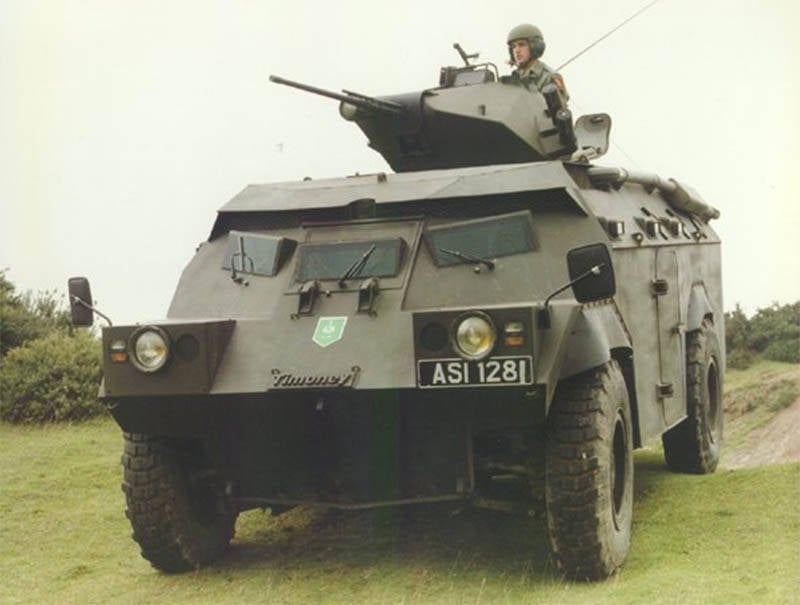
Export contracts
Just at this time, in 1975, the Belgian armed forces announced a tender for the supply of new armored vehicles. Several companies from different countries submitted their applications for the competition. The competition involved armored vehicles MOWAG Piranha 4x4, GKN AT-106, Cadillac Commando and others. Timoney Technology also decided to take part in a Belgian tender. Already in November, the 75-th armored car Mk 3 was delivered to Belgium and offered for testing. It is not known how the future fate of “Timoney” would have been, if the development company had not concluded a profitable contract. Shortly before the test began in Belgium, Timoney Technology signed an agreement with Beherman-Demoen Engineering, according to which the latter was to begin the licensed assembly of armored vehicles at its production facilities.
A joint offer of the Irish and Belgian companies interested the military, and in May 1977, they ordered 80 armored vehicles for their gendarmerie and 43 for the Air Force. In accordance with the requirements of the customer, the design of the armored car was slightly modified, after which it was named Timoney-BDX. The armored car for Belgium differed from the original “Timoni” in its inclined rear part of the roof of the hull (to increase the angle of the machine gun pointing), smoke grenade launchers, new embrasures, etc. The customer also demanded that the air conditioner with a filter be installed on the car and that the landing be reduced to eight people. Timoney-BDX was built in two versions, differing weapons and equipment. On the armored cars for the gendarmes, they provided for a dozer knife, and the variant for the Air Force did not have such a detail. Both versions were equipped with GPMG machine guns, but the ways of installing weapons differed. So, the gendarmerie received armored cars with towers, the Air Force - with open turrets. Beherman-Demoen Engineering handled the order in just one year: the first machines delivered the customer 1978 of the year in January, the last at the beginning of the next year.
At about the same time, Timoney Technology and Beherman-Demoen Engineering jointly participated in several other contests. Irish-Belgian armored cars were offered to Argentina, Indonesia, Malaysia and most other Third World countries. Everywhere, the Timoney-BDX machine received good reviews, but it came to the contract only in the case of Argentina. The military department of this country signed a contract, but there was enough financial capacity to purchase only five armored vehicles. The fourth operator of Professor Timoni’s armored vehicles (after Ireland, Belgium and Argentina) was Mexico, which later bought several cars from Belgium.
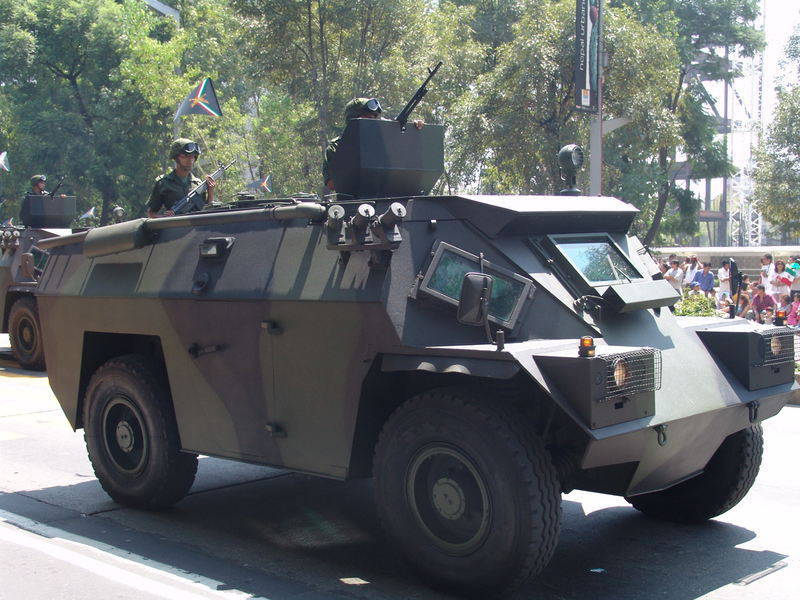
New name
In the second half of the seventies, Timoney and Beherman-Demoen Engineering tried to increase the export potential of their armored car, but failed to achieve great results. The six-wheel version and modification with a more powerful engine, as well as versions with different weapons did not go beyond the construction of prototypes.
Due to the lack of contracts and poor export prospects, the Irish-Belgian "union" sold the production rights of Timoney-BDX to the British company Vickers-Armstrong. In accordance with the new agreement, the British could build, sell and modernize their versions of armored cars for ten years. In 1981, three companies entered into an agreement and, before the start of 82, Vickers-Armstrong built two prototypes of updated armored cars, called Valkyr (“Valkyrie”). From the base Timoney-BDX, the new machines differed mainly in technological aspects, such as engine model, etc.
The third prototype of the Valkyrie was already a modernization of the original armored car. In 1984, Vickers-Armstrong presented an armored car with drawers for equipment on the outer surfaces of the armor, without a door on the starboard, a new stern door and updated glazing. The machine is heavier to 11500 kg and has become longer by 65 centimeters. Thanks to the use of a new engine with about 210 hp. managed to raise the maximum speed of the car to 100 km / h.
Vickers-Armstrong rightly assessed the possibilities of Valkyrie and therefore regarded it exclusively as an export commodity. For this reason, several weapon options were created at once, which could be of interest to a wide range of potential buyers. An enlarged sunroof was used to install a shoulder strap for mounting various weapon systems. First of all, the epaulet was intended for the installation of the towers of Hispano Suiza. Thus, the customer could get a Valkyr armored vehicle with an 60-20 Serval turret, equipped with an 60-mm mortar, 20-mm automatic cannon and 7,62-mm machine gun; the Lynx turret, armed with a GIAT 90-mm gun and a co-rifle caliber machine gun; or the Mangusta turret with an 60-mm mortar and heavy machine gun.
In addition to the Hispano-Suiza towers, the Cockerill CM-90 combat module (90-mm cannon, twin and anti-aircraft machine-guns), ENGESA ET-90 with similar weapons, etc. could be put on the armored car. In addition, variants with twin 20-mm automatic cannons, various machine gun and cannon armament were considered. Thus, the company Vickers-Armstrong hoped to offer potential customers a large number of weapon options, which, in its opinion, could contribute to export supplies.
However, the only state that is not just interested in the "Valkyries", but also signed a contract, became Iraq. The administration of S. Hussein at the very end of the eighties ordered two (!) English armored cars. They were handed over to customers in 1990, shortly before the outbreak of the Persian Gulf War. It is not known whether Baghdad intended to continue purchasing Valkyr cars, but because of the war with Kuwait and subsequent sanctions, such a contract was never signed. Other countries, in turn, did not show serious interest, with the result that Iraq remained the only buyer of the updated Timoney armored car.
***
Judging by the number of built copies, the Timoney armored car was not very successful. Probably the reason for this was his "origin". Professor S.G. Timoney created his armored car in accordance with the requirements of the Irish army and police, and this had a significant impact on his appearance. In addition, the technological part of the project was worked out in accordance with the capabilities of its own industry. As a result, a situation arose in which, in general, a good armored car turned out to be unclaimed by foreign customers. In the international market there were a large number of similar machines with higher performance or lower price. Thus, the Belgian success of the Timoney armored vehicle, as well as subsequent deliveries to Argentina and Iraq, can be considered a good coincidence, under which the capabilities of the equipment and the wishes of the customer coincided. On the other hand, the Irish defense design is not in demand on the international market, and against their background the Timoni armored car looks not too unfortunate.
Based on:
http://army-guide.com/
http://vadimvswar.narod.ru/
http://shushpanzer-ru.livejournal.com/
Nikolsky M.V., Ilyin V.E. Wheel armored vehicles. - M .: Astrel / AST, 2001
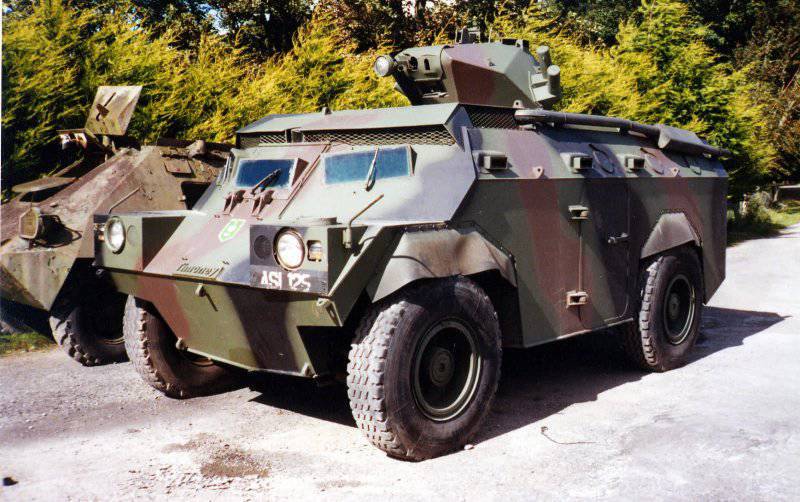
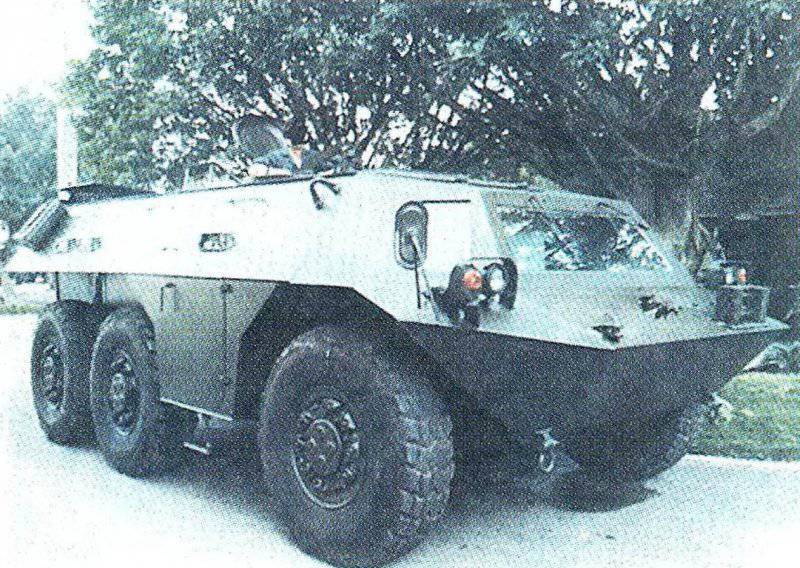
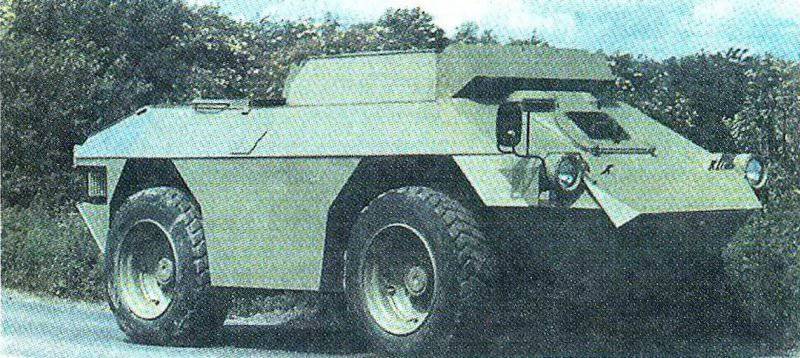

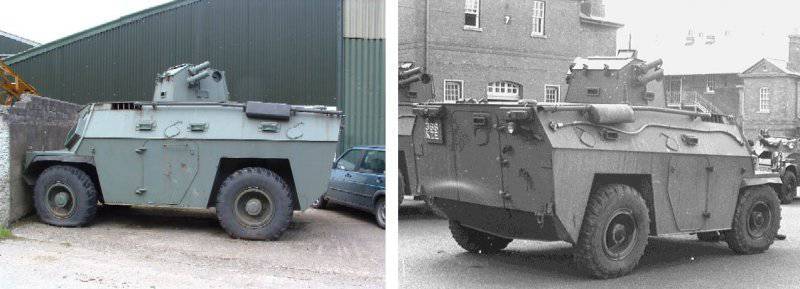
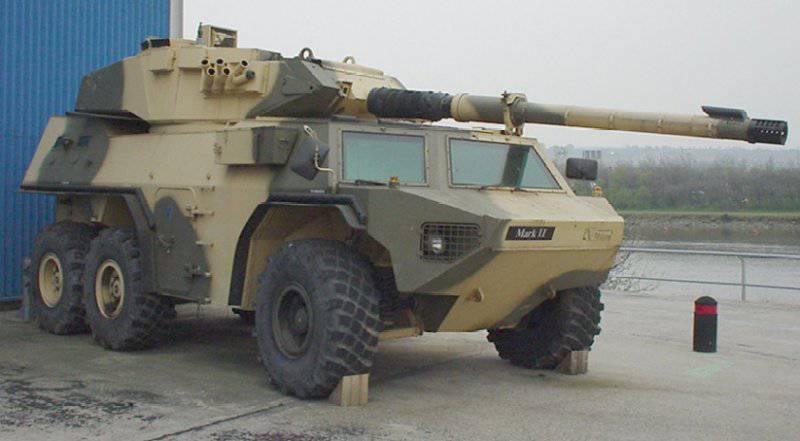
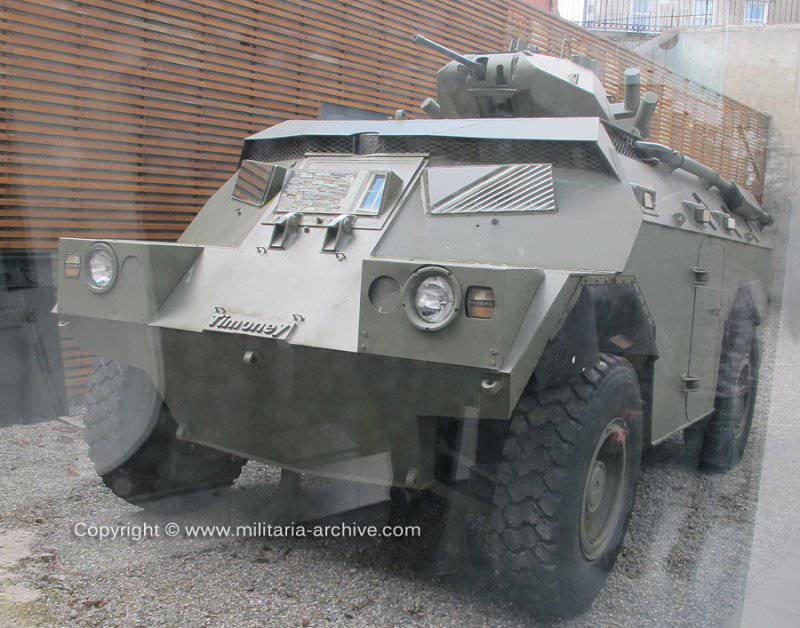
Information